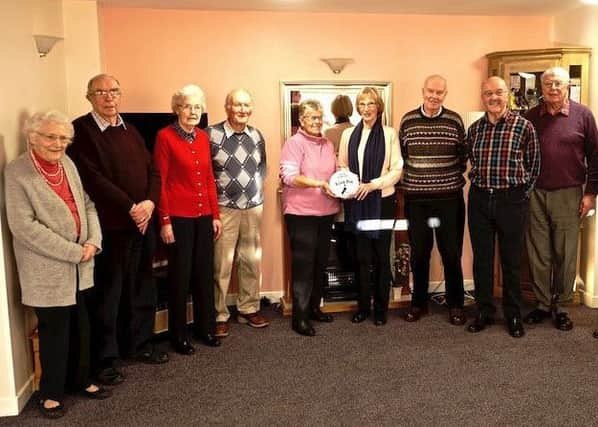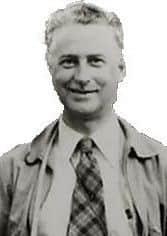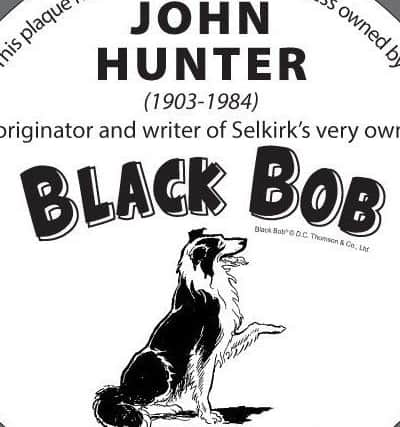Black Bob creator to be hailed


He started his own working life as a journalist, a trade which presumably took him towards Dundee, which was then famous for jute, jam and journalism, and where he also found a wife, Agnes, who was a musician and gave singing lessons.
The couple moved into a picture postcard cottage in the quiet street of Elm Row and bought a shop on the west side of Selkirk’s historic and simple Market Place that had been unchanged from the beginning of the 19th century when the old Tolbooth was demolished and the Sheriff, Walter Scott had his new courthouse built at the same time that the cattle and sheep market moved out of the venue that was named after it.


Advertisement
Hide AdAdvertisement
Hide AdJohn had been a journalist, but whether he was a newshound on a local newspaper in Dundee or in Perthshire or the Mearns or whether he was attracted to print journalism through sport is unclear.
I would have to believe he was too gentle a man to be involved in the hustle and bustle of rugby or football or, heaven forbid, a court reporter, but most of us now will possibly never know.
However, when he arrived in Selkirk, he struck up a strong friendship with Walter Thomson, the third generation of the family to head up the printing and publishing company at 71 High Street in Selkirk and who shared interests such as Selkirk Camera Club and the Selkirk Merchant Company.
John continued his interest in writing and did have a sideline from selling china and crockery in the art of freelance writing in newspapers and magazines.


Advertisement
Hide AdAdvertisement
Hide AdHe hadn’t been in Selkirk very long when he suggested a series of articles about a mythical Border Collie who stayed just outside Selkirk with his shepherd boss, Andrew Glenn and helped look after the herd and stayed in a kennel outside the cottage which looked out in the lambing field, and had a wonderful panorama down the burn.
Whether it was John’s own idea to have an artist on board or whether Walter Thomson sounded out the publishers of “The Weekly News”, Messrs DC Thomson (no relation) we will never know, but we do know that a pen and ink cartoon drawer, Jack Prout, agreed to read the scrips and add pictures to what became a weekly story about the Borders and of course Black Bob, which became keenly awaited episodes as we in this age await the next story of a soap opera.
John wrote the stories, sometimes at home in Elm Row and sometimes in the back shop of the china store while Agnes served the public with wedding gifts, presents and vial cookery bowls and dishes.
After editing the copy which made up around three quarters of an inch under each drawing, the print was posted off to the artist and after he supplied the artwork the whole thing was posted to 1 Albert Square in Dundee, the home of the publishing company then and now.
Advertisement
Hide AdAdvertisement
Hide AdSuch was the accuracy and the detail supplied by John M. Hunter that the artist had no need to visit the Borders, although one has to presume that the Selkirk Camera Club had something to do with location shots as Andrew Glenn’s cottage is an exact replica of the Herd’s Cottage in Corbie Lynn and Selkirk’s Stane Brig was often a background for a moving herd of sheep on the way to market.
The stories followed the lifestyles of the times and were often quite narrative about weather and road conditions and also commented on the prices raised for sales of lambs, which took place at Selkirk Market or further afield but which were attended by Andrew Glenn who walked his stock on the Border roads assisted by his trusty and trusted canine partner.
It is long since John and Agnes passed on but folks still remember the original stories and the Black Bob Annual which comes out with re-told stories.
One of these people is an Aberdonian, Bob Mitchell, who now resides in Haddington and came to see what Selkirk looked like after having read about us over all of the second half of the 20th century. He met Sandy Smith and John Irving, two colleagues in the folk music scene, almost by accident a few years ago and the trio set up “The Friends of John Hunter” to further investigate the writer and his work.
Advertisement
Hide AdAdvertisement
Hide AdI had earlier asked DC Thomson and Co if they had plans to reintroduce the canine hero who could rescue drowning sheep and lost children, but at that time there were no plans to bring the series back. Their chief executive Ellis Watson did answer my letters more recently and acknowledged the Selkirk dog and his creator.
I believe that Selkirk owes a deep debt of gratitude to the team who set up “The Friends of John M Hunter” and his writings. If Dundee can still be acknowledged as the Scots’ home of journalism then Selkirk can equally and justifiably be proud of its team of journalists and writers who have carved their names in our heritage.
John M Hunter, Walter Thomson (fly-half and Border callant), Graham Bateman, David Mackie, Walter Scott and James Hogg in differing generations, but all world famous.
We also have to acknowledge the help given to this memorial and celebration by many who remember the quiet man in the china shop, Mr Hunter and also to Cath and James Rutherford of Bordersprint for preparing the groundwork and the design of the memorial plaque in John Hunter’s memory.